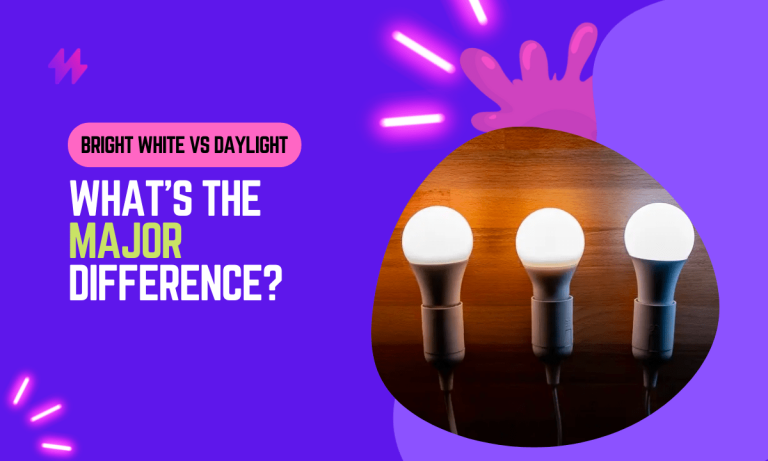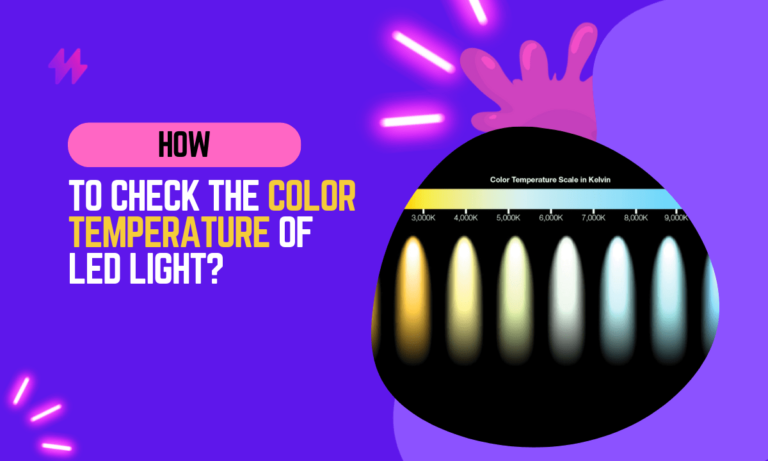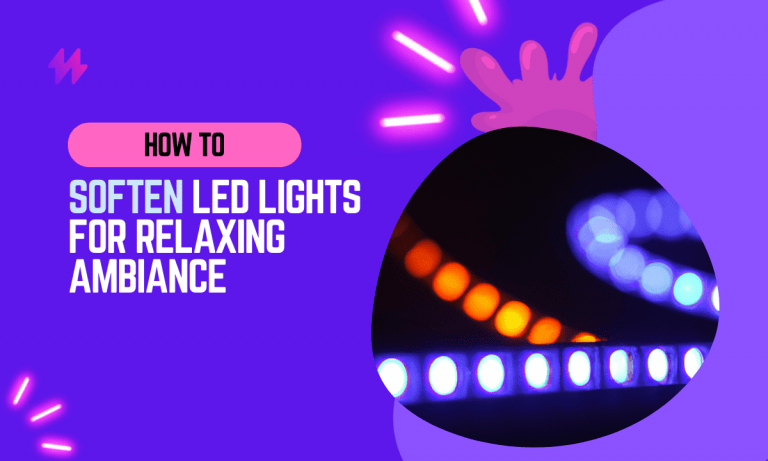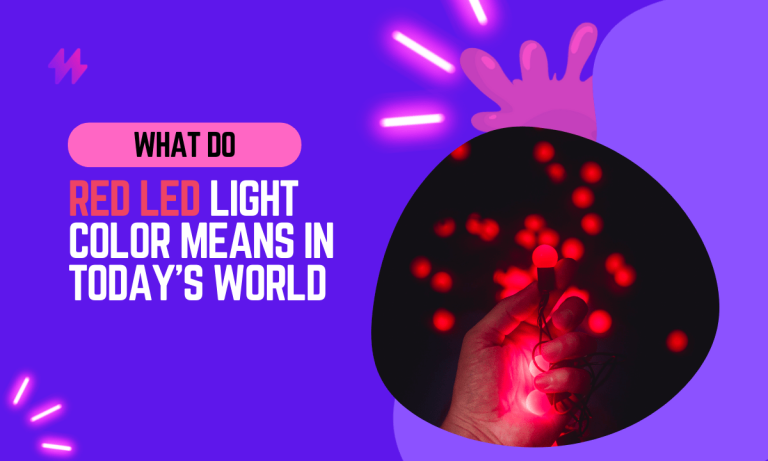Warm White vs Cool White Lighting: Which is Better?
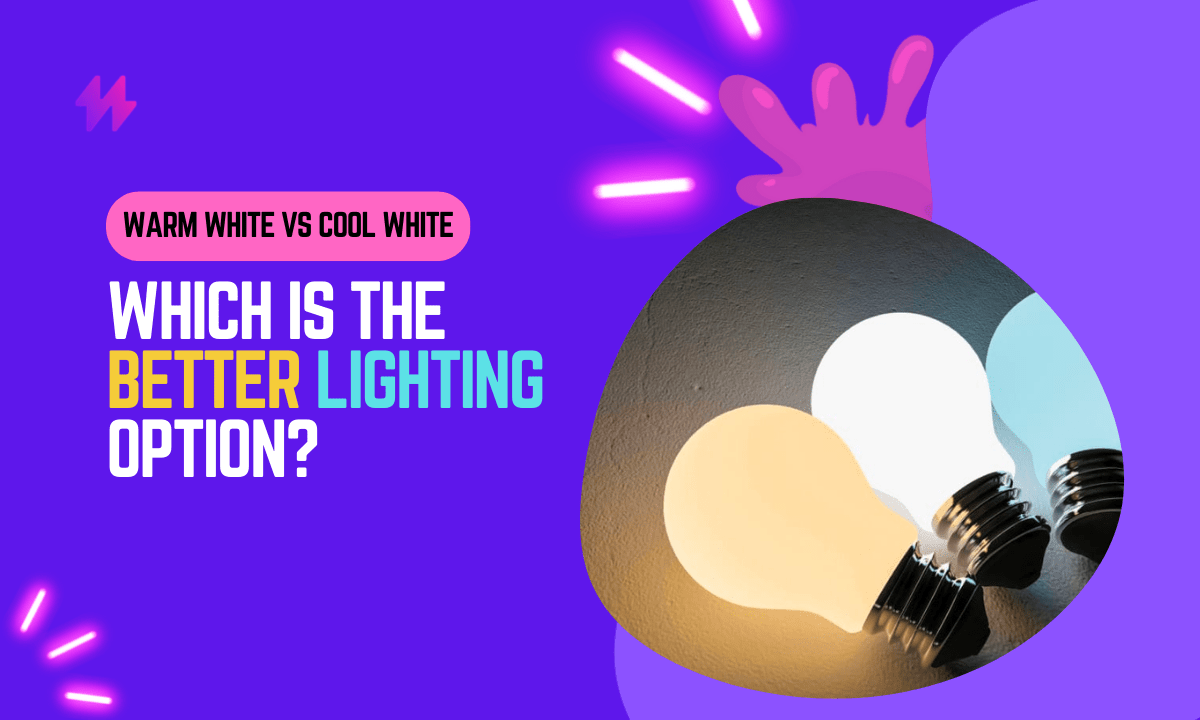
Lighting is an essential part of any interior design, and it can have a significant impact on the look and feel of a space. When it comes to choosing the right type of lighting, many people are often confused between warm white, neutral white, and cool white lighting. Both types have their unique features and benefits, and choosing the right one can make a huge difference in the ambiance of your home or office.
In this blog post, we’ll explore the differences and similarities between warm white and cool white lighting and help you determine which is better suited for your needs. So, let’s dive in and learn more about these popular lighting options!
When selecting the appropriate lighting type for your space, consider the impact of different color temperatures on your overall ambiance. By understanding how warm white vs cool white lighting affects illumination, you can create lighting best suited for areas such as cozy lounge spaces or modern looks that incorporate natural light and high brightness.
Warm White vs Cool White Lighting: Which is Better?
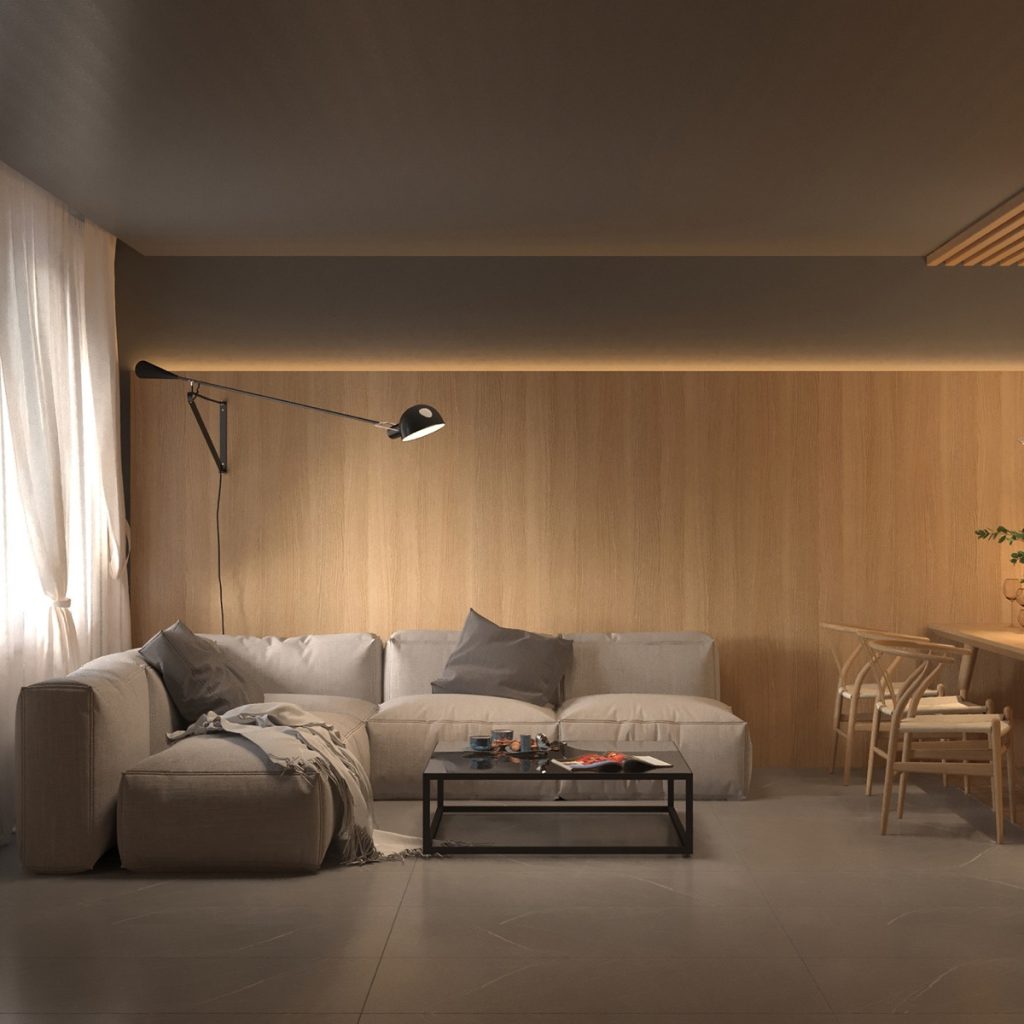
Warm white lighting typically falls within the color temperature range of 2700K to 3000K on the Kelvin scale. It emits a cozy, yellowish glow that closely resembles the warmth of traditional incandescent bulbs. This type of lighting creates a welcoming and relaxed ambiance in a space.
The Kelvin scale is used to measure the color temperature of light sources. In the case of warm white lighting, the color temperature typically ranges from 2700K to 3000K. Lower Kelvin values indicate warmer, more yellow-toned light.
Warm white lighting is commonly used in areas where a comfortable and inviting atmosphere is desired. It is well-suited for residential spaces such as living rooms, bedrooms, and dining areas. The warm glow of this lighting promotes relaxation, intimacy, and a cozy environment. Additionally, warm white lighting is often preferred in hospitality settings like restaurants and hotels, as it creates a pleasant and welcoming ambiance for guests.
Warm white lighting fixtures include chandeliers, table lamps, wall sconces, and recessed downlights. When selecting bulbs for warm white lighting, look for those with a color temperature in the range of 2700K to 3000K. LED bulbs and compact fluorescent bulbs are popular choices for achieving warm white lighting.
Warm white lighting not only sets a relaxing tone but also enhances the aesthetic appeal of cozy lounge areas by creating a soft and inviting atmosphere. When comparing warm white vs cool white lighting, it’s essential to consider how the warmer color temperatures can evoke feelings of warmth and comfort in any lighting design.
Cool White Lighting: Understanding Its Benefits and Applications
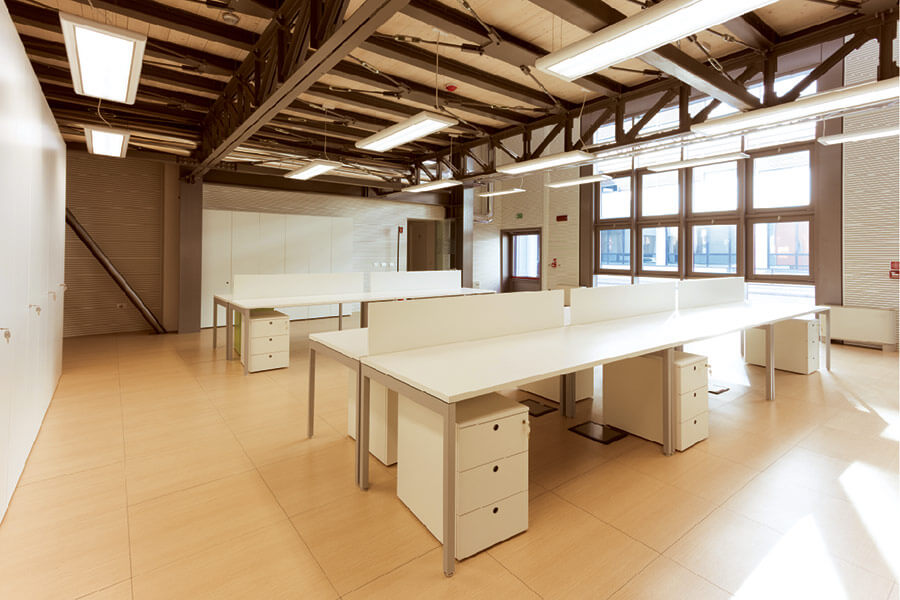
Cool white lighting falls within the color temperature range of 3500K to 4000K on the Kelvin scale. It emits a bright, bluish-white light similar to natural daylight. This type of lighting creates a more energetic and vibrant atmosphere in a space.
The color temperature of cool white lighting typically ranges from 3500K to 4000K on the Kelvin scale. Higher Kelvin values indicate cooler, bluish-toned light.
Cool white lighting is often used in areas where clarity, focus, and enhanced visibility are essential. It is commonly found in commercial and retail settings such as offices, hospitals, supermarkets, and showrooms. The bright and crisp light provided by cool white lighting helps improve concentration, alertness, and task performance. It is also suitable for outdoor lighting, as it enhances security and visibility during nighttime.
Cool white lighting fixtures include fluorescent tubes, track lighting, pendant lights, and task lights. When selecting bulbs for cool white lighting, look for those with a color temperature in the range of 3500K to 4000K. LED bulbs and fluorescent tubes are popular options for achieving cool white lighting.
Also read: Difference between Daylight and Soft White Lighting
Cool white lighting provides a crisp and vibrant atmosphere, making it ideal for environments that demand enhanced visibility and focus. When balancing your lighting options, consider incorporating both warm whites for cozy areas and cool whites for workspaces to create a dynamic ambiance that meets various needs. Using **LED lighting** can help achieve this balance, especially with **LED strip lights** that allow for versatile light positioning and customization.
Warm White vs Cool White Lighting: Key Considerations & Comparison Chart

| Features | Warm White Lighting | Cool White Lighting |
| Color temperature | Between 2700K-3000K | Between 3500K-4000K |
| Hue | Yellowish or Amber | Bluish or White |
| Intensity | Softer and less bright | Bright and crisp |
| Applications | Living rooms, bedrooms, and dining rooms | Kitchens, bathrooms, and offices |
| Mood and ambiance | Cozy and relaxing | Energizing and stimulating |
| Eye strain | Less likely to cause eye strain | May cause eye strain with prolonged exposure |
| Environmental impact | Energy efficient | Energy efficient |
| Lifespan | Long lifespan | Long lifespan |
Note: The values in the table are approximate and may vary depending on the specific brand and type of light bulb.
When selecting the right lighting for specific uses, it’s crucial to consider the characteristics of both warm white and cool white lighting. For example, while warm ambient lighting creates a soothing environment, a **white lamp** utilizing cool white bulbs can contribute to a more focused, industrial lighting setup that is vital in workspaces.
Visual Impact and Ambiance: Exploring Warm White vs Cool White Lighting
The visual impact of warm white and cool white lighting differs significantly. Warm white lighting creates a cozy and relaxed atmosphere, ideal for creating a sense of comfort and intimacy. On the other hand, cool white lighting produces a brighter and more energetic environment, promoting alertness and focus.
When choosing between warm white and cool white lighting, it’s important to consider how artificial light affects our perception of space. Different color temperature values can enhance or diminish the overall atmosphere, transforming the functionality of areas from cozy lounges to bright workspaces. Incorporating an **incandescent lamp** in your lighting scheme can provide a warm feeling, while a **white light bulb** with cool white output can elevate the brightness for clearer visibility. Balancing these options allows homeowners to curate a space that suits both comfort and clarity, making informed choices about their **color temperature** preferences.
Understanding the Psychological and Physiological Effects on Human Perception: A Deep Dive into Warm White and Cool White Lighting
Warm white lighting has a calming effect on the human mind and body, making it suitable for spaces where relaxation and comfort are desired. Cool white lighting, with its resemblance to natural daylight, can increase alertness, improve productivity, and provide a sense of energy. You should also consider which lighting is bad for human eyes.
The choice between warm white vs cool white lighting can significantly affect how we perceive light in various environments. It’s essential to remember that while artificial light can mimic some characteristics of natural daylight, like that from skylights or sunlight, it can also introduce elements, such as blue light and artificial hues, that may not always promote relaxation or comfort.
Important Considerations for Spaces and Activities in Lighting Choices
The choice between warm white and cool white lighting depends on the specific space and its intended use. In residential areas, warm white lighting is often preferred for bedrooms, living rooms, and dining areas to create a cozy and inviting atmosphere. Cool white lighting is more commonly used in workspaces, kitchens, and task-oriented areas where clarity and focus are important.
The choice of light bulbs plays a crucial role in achieving the desired atmosphere and functionality of a space. Using an incandescent lamp in dining areas can create warm lighting environments, while opting for cool white bulbs in a workspace can ensure that you have adequate clarity and focus throughout the day.
Energy Efficiency and Cost-Effectiveness in Lighting Choices: Warm White vs Cool White
Energy efficiency is an important consideration when selecting lighting options. Both warm white and cool white lighting can be achieved with energy-efficient LED bulbs. However, it is worth noting that cool white LEDs tend to be slightly more energy-efficient than warm white LEDs.
In addition to energy efficiency, selecting the right lighting can enhance the overall aesthetics of your space. The light components of both **led lamps** and **incandescent light bulbs** can significantly affect the mood, allowing for a warm feeling in cozy areas or a cleaner, brighter feel in workspaces, which is essential when considering **warm white vs cool white lighting: which is better** for your needs.
Maintenance and Lifespan of Bulbs: Key Considerations
LED bulbs, regardless of whether they emit warm white or cool white light, generally have a longer lifespan compared to traditional incandescent bulbs or fluorescent tubes. LED bulbs require less frequent replacement, reducing maintenance efforts and costs.
You may also like: Difference between Bright White vs Daylight Lighting
When choosing between warm white vs cool white lighting, it’s equally important to understand the differences in **colour temperature** and how they influence the ambiance of a room. Using a **tungsten lamp** can create a cozy feel reminiscent of **candlelight**, while **cool white bulbs have a higher lumen output**, which enhances visibility, making them **white lighting ideal** for workspaces needing **ultra-high brightness**.
Essential Considerations for Selecting Between Warm White and Cool White Lighting
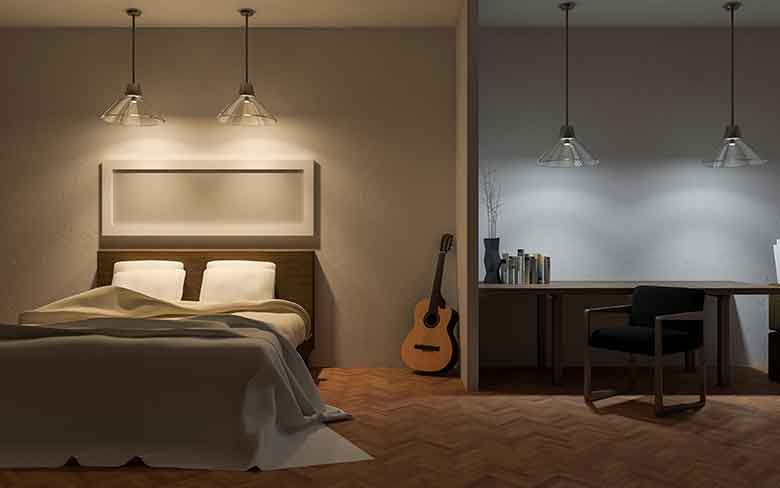
Personal Preferences in Choosing Between Warm White and Cool White Lighting
Personal preferences play a significant role in choosing between warm white and cool white lighting. Some individuals may prefer the cozy and intimate atmosphere created by warm white lighting, while others may lean towards the energizing and vibrant ambiance of cool white lighting. Consider your personal taste and the desired aesthetic for the space in question.
When determining the right lighting setup for your space, it’s essential to evaluate not only the aesthetics but also how different types may influence functionality. Using advanced options like **LED lighting**, which often features versatile **light strips**, allows for the customization and application of various **color temperature values**, enhancing both the mood and usability throughout your environment.
Purpose and Function of the Space: Key Considerations for Warm White vs Cool White Lighting
The purpose and function of the space heavily influence the choice of lighting. Consider whether the area is meant for relaxation, productivity, or a specific activity. Bedrooms, living rooms, and dining areas typically benefit from warm white lighting, while workspaces, kitchens, and task-oriented areas may benefit from cool white lighting.
The choice of lighting greatly impacts the mood and functionality of any given space. To achieve the ideal atmosphere, consider how **white color temperatures** can bring warmth or coolness to an environment, highlighting the versatility of **led lighting** in creating both relaxing and vibrant settings.
Selecting Warm White vs Cool White: Insights on Existing Decor and Color Schemes
Take into account the existing decor and color schemes of the space. Warm white lighting tends to complement warm-toned and earthy color palettes, while cool white lighting pairs well with cooler and neutral color schemes. Ensure that the lighting choice harmonizes with the overall design and enhances the aesthetic appeal of the room.
When designing your space’s lighting, consider how different colors and brightness levels influence atmosphere. The right color temperature choice—whether selecting warm white or cooler whites—can create a desirable ambiance that aligns with your decor, ensuring effective use of both conventional lamps and more modern options like LED lighting that meets the requirements of varied settings.
Choosing the Desired Mood and Atmosphere in Lighting: Factors to Consider
The desired mood and atmosphere you want to create in the space should guide your lighting decision. Warm white lighting is often associated with relaxation, coziness, and a sense of intimacy. In contrast, cool white lighting can evoke a more energetic, refreshing, and professional ambiance.
Choosing the right lighting depends significantly on the desired ambiance, and this is where understanding the nuances of **white refers** to different lighting options becomes essential. For instance, **daylight LEDs** can mimic the **brilliant sun** effect, creating a refreshing atmosphere, while softer **candles** or a **filament lamp** can enhance the coziness of a room, perfect for gatherings or relaxation.
Practical Considerations for Choosing Between Warm White and Cool White Lighting
Practical considerations, such as the need for task lighting or safety requirements, should be taken into account. Task-oriented areas, such as home offices or kitchens, may benefit from the clarity and brightness of cool white lighting. Outdoor areas, such as pathways or security lighting, often require cool white lighting for improved visibility and safety.
Also read: 5 Ways to Change White LED Light to Yellow
When choosing the type of lighting for your home, the balance between cooler lights and warmer tones can have a profound effect on both mood and function. Implementing soft lighting in main room lighting can enhance relaxation, while utilizing a brighter white light bulb can assert a clean look in workspaces that require focus and clarity.
Conclusion: Final Thoughts on Warm White vs Cool White Lighting
In conclusion, the choice between warm white and cool white lighting boils down to the specific needs and desired ambiance of a space. Warm white lighting, which typically has a color temperature of around 2700K to 3000K, emits a soft, golden hue that creates a cozy and inviting atmosphere. This type of lighting is ideal for living rooms, bedrooms, and dining areas where relaxation and comfort are priorities. The warm glow enhances earth tones and wood furniture, making it excellent for spaces designed to be tranquil and restful. Additionally, warm white lighting is often preferred in environments where a peaceful, serene setting is desired, as it naturally reduces eye strain and provides a comforting contrast to the harshness of natural daylight.
Conversely, cool white lighting, with its color temperature ranging from 4000K to 5000K, emits a more vibrant, crisp light that resembles daylight. This quality makes cool white ideal for kitchens, bathrooms, and workspaces where high visibility and concentration are required. The brighter, more energetic light of cool white bulbs enhances mental alertness and improves mood, which is beneficial for task performance and clarity. Additionally, this cooler spectrum is excellent for modern, minimalist spaces where clean lines and bright spaces are emphasized. It also works well in areas that require precise color perception, such as art studios or display areas. Ultimately, neither warm white nor cool white lighting is inherently better; instead, the best choice depends on the functional needs of the room, the activities performed within it, and the emotional effects desired by the occupants. By carefully selecting the appropriate color temperature, one can significantly enhance the functionality, style, and comfort of any given space.
Warm White Vs Cool White Lighting: Which Is Better | Benefits of Warm White Lighting
Choosing between warm white and cool white lighting can significantly impact the atmosphere of a space, especially in residential settings. Warm white lighting, often associated with the venerable incandescent light, exudes a yellowish glow that creates a cozy and inviting ambiance. This color temperature resembles the softer tones of halogen lights, which enhance comfort and relaxation in living areas. On the other hand, cooler lights accentuate features and provide a more energetic environment, making them popular in spaces dedicated to work or activity. Understanding the differences in the white light color range, along with specific color temperatures, aids in selecting the right option. The light emitted by LED lighting often falls into these categories, with some shades leaning towards the common daylight color that includes blue daylight tones. Ultimately, the decision on white depends on personal preference, desired atmosphere, and how the light interacts with colors within the room.
Warm White vs Cool White Lighting: Which is Better | Enhancing Comfort and Relaxation
The debate over Warm White vs Cool White Lighting: Which is Better often centers on the emotional ambiance created by different white lights. Warm white lighting tends to provide a cozy, inviting atmosphere, mimicking the soft glow of traditional light bulbs. This yellowish light resembles the hues of a crackling fire, which can enhance comfort and relaxation in residential spaces. In contrast, cool white lighting delivers a more vibrant illumination that energizes a space, producing a cool feeling that can be ideal for task-oriented environments. Understanding the right color temperature for different applications can make a significant difference in how colors are perceived and enjoyed in a room.
In environments such as photography, the color temperature of the lights plays a crucial role in capturing real colors accurately. Warm white light contains more reds and yellows, contributing to that comforting glow, while cool white light leans towards blues, affecting how subjects are represented in many colors. The LED lighting industry has expanded these options even further, offering a wide white range of temperatures to fit any need. Consumers now face the challenge of choosing the right shades and temperatures, navigating through the many choices that each type offers. This decision can influence not only the aesthetic of a space but also the overall mood and functionality, making it essential to weigh the benefits of Warm White vs Cool White Lighting: Which is Better carefully.
Ideal for Residential Spaces
Choosing the right lighting can significantly impact the ambiance of residential spaces. Warm white lighting often creates a cozy and inviting atmosphere, making it an excellent choice for living rooms and bedrooms. The good color temperature of warm white lights promotes relaxation and comfort. In contrast, cool white lighting tends to be more stimulating and is suited for areas requiring focus, like kitchens or home offices. Understanding the nuances between warm white vs cool white lighting: which is better for your specific needs can lead to a more enjoyable living environment.
The preference for warm white lighting in home settings aligns with the concept of achieving comfort and tranquility. Many homeowners opt for warm shades as they evoke feelings of warmth and safety. The right colour temperature has the potential to transform a space, providing a sense of intimacy. By understanding the different temperatures of light and how they interact with various colours in our homes, individuals can make informed decisions. Warm white vs cool white lighting: which is better ultimately depends on personal taste and the desired atmosphere.

